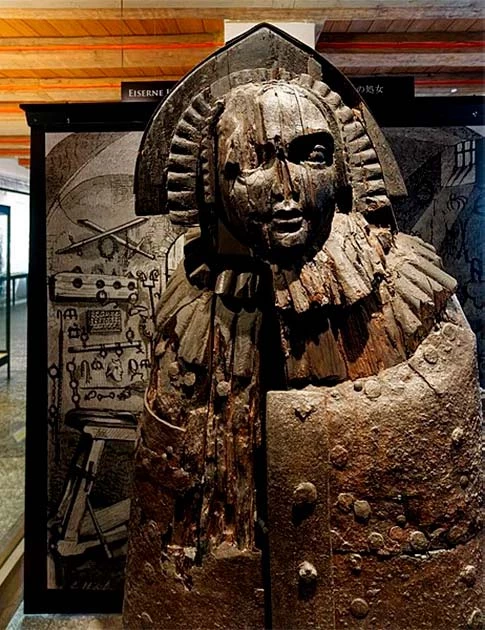It seems our collective understanding of history is often prone to misconceptions. Whether through half remembered facts, more recent research overthrowing established wisdom, or just simple fiction, we often collectively get a lot of stuff wrong.
Some of these incorrect facts are now so well established that the error itself is famous. Take, for example, the Egyptians: we know that the pyramids were not built by slaves, and that Tutankhamun’s curse was a 20th century fabrication: here the mistakes themselves are what is remembered.
But there are far more mistakes than that which still go undetected. See if you already knew any of the following.
1. Roman Dining Habits and the Vomitorium
Ancient Rome has been presented as a place full of excesses of luxury and consumption. So much so that wealthy Romans were supposed to have a separate room dedicated to emptying their stomach during banquets, by vomiting.
However, more recent research has shown that this may not have been the case. The word “vomitorium” itself presents an image in our minds that is different than what was the reality.

Vomitoria certainly existed for the Romans, but in a very different sense. They were definitely known by the fourth century AD, when Macrobius, a Roman provincial and writer, used the word to refer to amphitheater passageways that “disgorged” its patrons to their seats. In this context they are simply passageways, and those in the Colosseum in Rome were apparently so efficient that with 76 different “vomitoria”, the venue of 50,000 could be filled in 15 minutes.
2. The Dark Ages were not really so “Dark”
The first person to describe the period following the fall of the Western Roman Empire as a “Dark Age” was the Italian poet Petrarch in the early 14th century. He was specifically contrasting the “light” as in illuminated era of the Romans with the “dark” centuries that came after.
However, in absolute terms this is an error. It is true that the fall of Rome led to a period from which many records were lost, but these centuries were not particularly harsh or difficult, or even different to life under the Romans to many people. They are only dark in the sense that they are more mysterious.
- Kushim the Sumerian and the first Accounting Mistake in History
- Pulling A “Sickie”: What Was A Roman Vomitorium Actually For?
Many think this time was one of barbarism, or that the church exercised undue levels of control. However as more research is done on the period this seems much less likely, and most scholars now reject the term “dark age” entirely.
3. Modern Life Expectancies are no Longer than Medieval Ones
Many summations of history note that the life expectancy of earlier humans was much lower than that of ours in the modern 21st century. This is a gross misunderstanding of the situation however.
It is true that infant mortality claimed far more lives in the past than it does today. However for those who survived the first few years, a long and healthy life could easily await. It is the child deaths than skew the average sharply downwards.
A medieval European who survived childhood could expect to live long into his sixties, roughly the life expectancy in the southeast continental United States today. Even with our modern medicine and wonder drugs, adults are living not much longer than our ancestors did.
4. Vikings did not have Horned Helmets
Vikings are very easy to picture: enormous, hairy, blonde, and violent. But amidst all the pigtails, heavy drinking and battleaxes, one feature stands out as particularly indicative of Norse warriors, and it is completely wrong: Vikings did not have horns on their helmets.
Plenty of civilizations did, to be sure. Dating back to the Bronze Age at least, and scattered across the world are numerous separate cultures who liked to put horns in their helmets, presumably to look really scary.
But Vikings did not. Horns may look great, but in practical terms they would be an unnecessary encumbrance in battle, prone to getting tangled and making it difficult for the wearer to quickly turn their head. Any Viking would know better.
5. Iron Maidens did not Exist
Quite a few medieval torture devices involved leaving the unfortunate captive to die. The gibbet, for example, was not some simple suspended cage: those held within it would eventually choke under their own body weight, the iron around their neck strangling them as they collapsed.
This was the idea with the iron maiden. Prisoners had to stand inside this upright coffin filled with spikes, until in their exhaustion they fell against them and were impaled. It was nasty, heartless, and it also probably never existed.

During the 19th the Iron Maiden became symbolic of the brutal and sadistic torture methods used in the medieval period. The bizarre thing is that other than a few pre–medieval Era accounts, there appears to be little to no concrete evidence that the Iron Maiden was utilized. Today the story of the device is thought to have been a Victorian invention.
6. Columbus’s Backers didn’t think he would Sail off the Edge of the World
Columbus, famously, struggled to raise the financing for what would become one of the most transformative exploratory voyages in history. In 1491, the year before he sailed the ocean blue, he was hawking himself round Europe trying to find someone to pay for his expedition.
- Death by a Thousand Spikes: Was the Iron Maiden Ever Real?
- Did the CIA Really Have an Inflatable Plane?
The rumor persists that this was because everyone thought Columbus was on a fool’s errand, and that the money, the expedition and Columbus himself would simply fall over the edge of the flat Earth if they went in that direction too far. But this was not the case; scholars had known the Earth was spherical for centuries by this point.
Backers were much more worried that Columbus didn’t know what he was doing, and they were right. Columbus was aiming for south east Asia, but had made some egregious calculation errors in concluded they were far closer than they in fact were. Happily there was another continent in the way, else Columbus would have died long before his voyage was over.
7. George Washington did not have Wooden Teeth
Washington’s false teeth are a common story and it seems relatively certain that the poor man did have problems with toothache and his dentures. The fact that most of the pictures of America’s first President show him in apparent facial discomfort only adds to the story.

But his famous wooden teeth were not, in fact, wooden. Instead they were a nightmarish collection of materials which somehow seem far worse.
Washington’s teeth were made of gold, lead and ivory, specifically from a hippopotamus. They also included animal and human teeth, the latter possibly forcefully extracted from slaves. Perhaps its best we don’t have any pictures of him smiling, after all.
8. Napoleon was not that Short
“The Little Corporal” as the French called him is a figure easily brought to mind. Portly, immaculate in his dress and toilet, serene and of a notably short stature. But this was not really the case.
Certain things have to be considered in this assessment. Firstly, many depictions of Napoleon were made by his enemies, and are as inaccurate as the puff portraits created at the same time by the French. So Napoleon did not look like a Greek god, but no, he was also not short and fat either.
Well, not entirely. The French revolution may have broken down French class boundaries but vestiges of the old system survive, and the differences in health and in height between rich and poor were some of these. Napoleon was not short for a French peasant, on the contrary he was entirely average. But surrounded by his generals, tall aristocrats all, he may have seemed tiny to onlookers.
Top Image: Despite almost every modern depiction of Vikings including horned helmets, this “fact” is wrong. Source: Fernando Cortés / Adobe Stock.
By Joseph Green